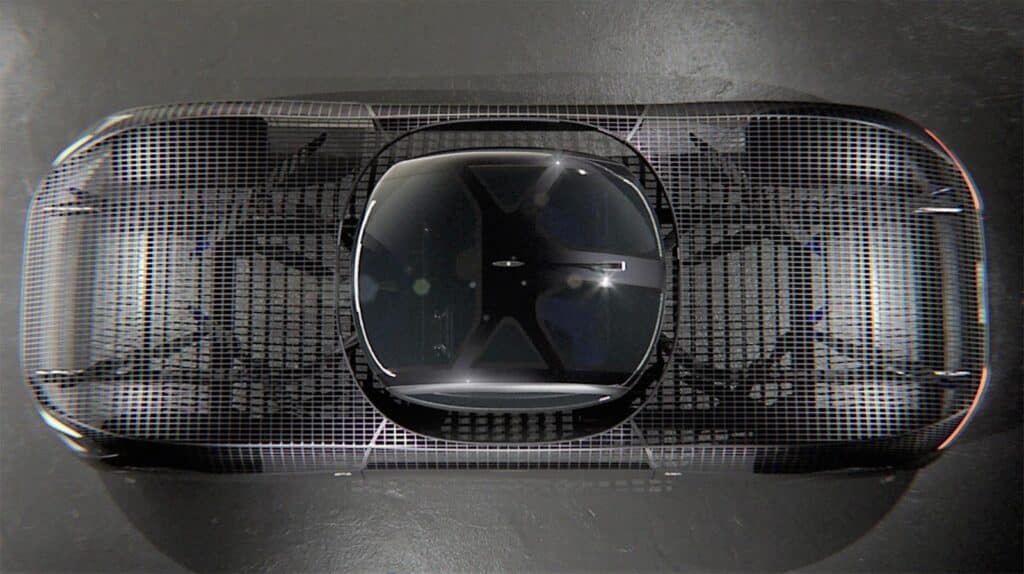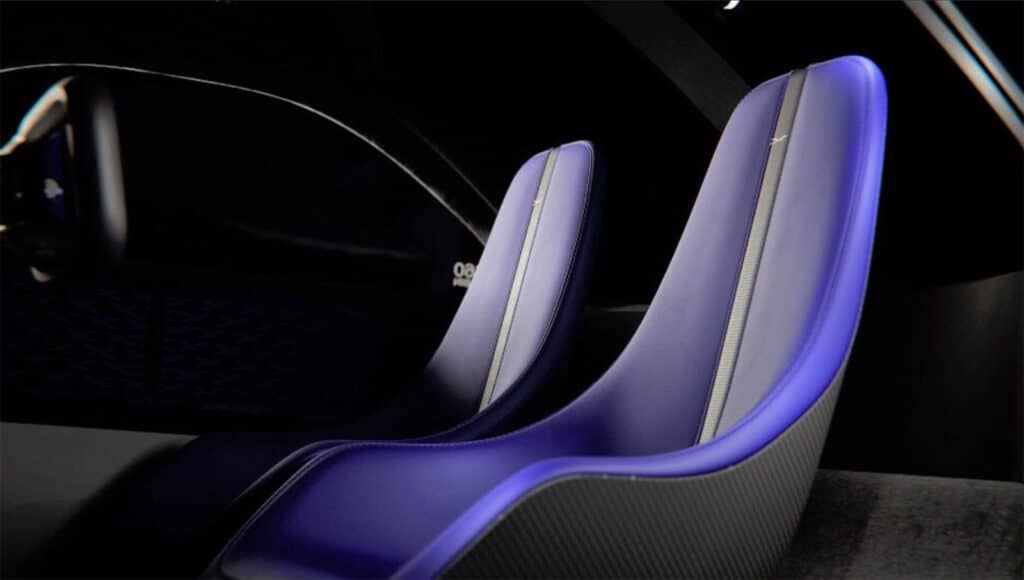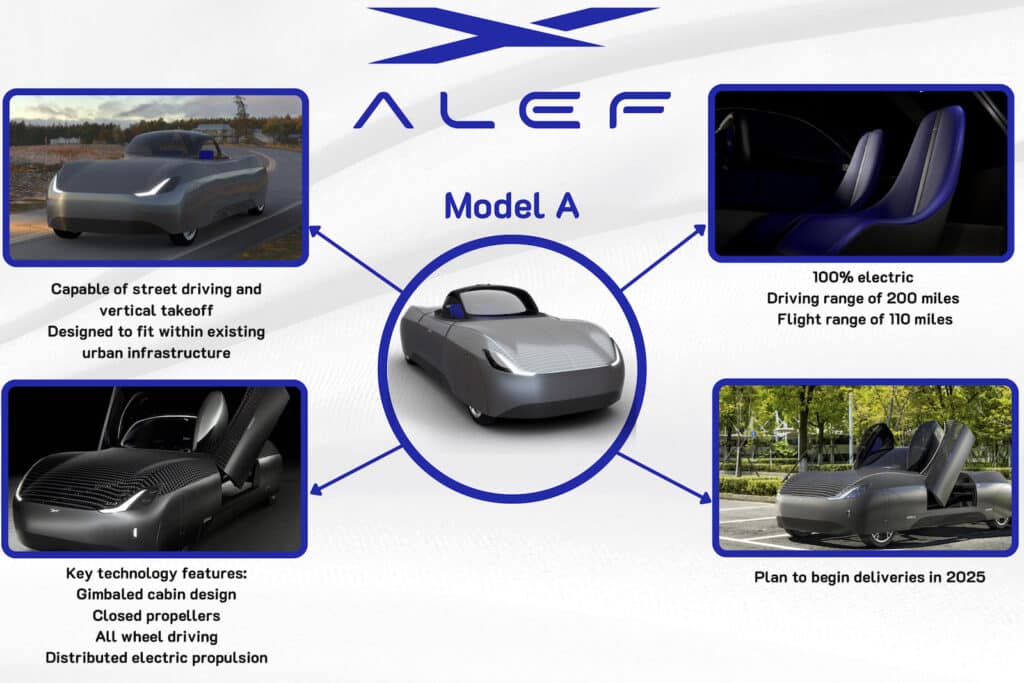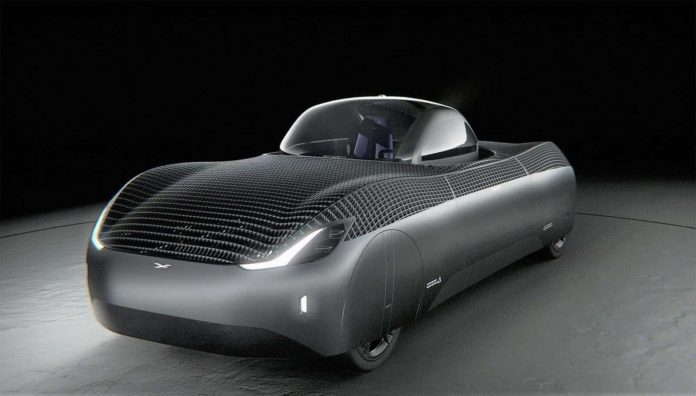A dream that has stumped automotive entrepreneurs since the days of Henry Ford now appears a very big step closer to reality, thanks to Alef Aeronautics, a startup from Santa Clara, California.
The Alef Model A has received approval from the Federal Aviation Administration to begin flight testing and, the company promises, a production version should be on sale by the fourth quarter of 2025. But beyond winning final FAA authorization, the Model A also will need to win regulatory approval from federal automotive safety regulators and, possibly, from state authorities, as well.
The craft has the look of a sports car, but the upper part of its body is permeable, somewhat like the wire frame renderings automakers use to show off the underlying components of a vehicle. In this case, however, this is part of the fundamental design which relies on eight electrically powered motors at the bottom of the Model A to take off vertically and then fly.
Order bank opens
If all goes according to plan, Alef plans to charge $300,000 for the Model A, and it has begun taking advance orders with a $150 reservation. Those who want to move up the line can put down $1,500 to be on a priority queue.

“The Alef Model is a modern solution for both urban and rural transportation needs in the 21st Century because it is the fastest and most convenient transport ever created from the point of origin to the final destination,” said CEO Jim Dukhovny. “By enabling consumers to choose driving or flying mode, the Alef flying car allows the optimal path depending on road conditions, weather, and infrastructure.”
The dream of combining an automobile and an aircraft has stirred the imagination of consumers and manufacturers for more than a century. Henry Ford made a high-profile effort to build the equivalent of his Model T, something that became widely known as the “Flying Flivver.” But the project was terminated following the death of Ford’s test pilot, a close friend of the automaker’s founder.
The Aerocar
In the 1950s, a startup launched the Moulton Taylor Aerocar. It featured a Volkswagen Beetle-like body — but for the outboard wheels. And it could tow a trailer carrying its detachable wings. They could be hooked up quickly to make the Aerocar flight ready. But only a handful were ever built.

In recent years, the concept has come back to life. An assortment of startups are working on what are frequently described as “flying cars” or “flying cabs.” In reality, most look like massive drones with wings or spars holding, in some cases, more than a dozen electric motors. Only a very few of these designs could ever function as roadworthy automobiles, requiring plenty of space to take off and land, whether vertically, like a helicopter, or more like a conventional airplane.
“There is a reason we don’t have flying cars today; it is because it is impossible,” Dukhovny suggested during a presentation last year. “Why? The laws of physics. In order to fly, you need an air pressure under the wing to be more than air pressure over the wing … Hence, you need a large wing area.”
How it works
Alef’s solution is to use those eight propellers to create a high-pressure zone beneath the Model A.
The approach it’s taking, the company claims, will permit up to 110 miles of range once airborne, with the battery pack delivering about twice as much range on the ground. Eventually, Alef hopes to extend those numbers as battery technology improves. But Dukhovny believes this is enough to let a motorist “hop” its way over urban congestion, construction or accidents.
The company was founded in 2015 as Armada Aeronautics, its founders sketching out a concept on a cocktail napkin. A scale model prototype was flown three years later, and a full-size model in 2019 — though the current design was only locked down after Hirash Razagi, a stylist with experience at Lotus, Hyundai, Volvo and other automakers, was hired on in 2021.

The company changed its name last year, using “Alef,” the first letter in numerous Middle Eastern alphabets.
Certification
The certification granted by the FAA last month has significant caveats as to when and where the Model A can be flight tested. It is intended “for limited purposes, including exhibition, research and development.”
The current plan would allow the Model A to operate on the ground at speeds of up to a mere 25 mph, sidestepping some of the safety regulations that apply to a conventional vehicle. But Alef said it hopes to meet stricter guidelines that would allow the craft to operate on highways, as well.
Current plans would have the initial version of the Alef Model A in retail production before the end of 2025, with pricing to start around $300,000. The company has now opened up an advance order bank requiring a $150 deposit — though anxious customers with a bit more cash can move to the head of the line with a $1,500 “priority” queue.

